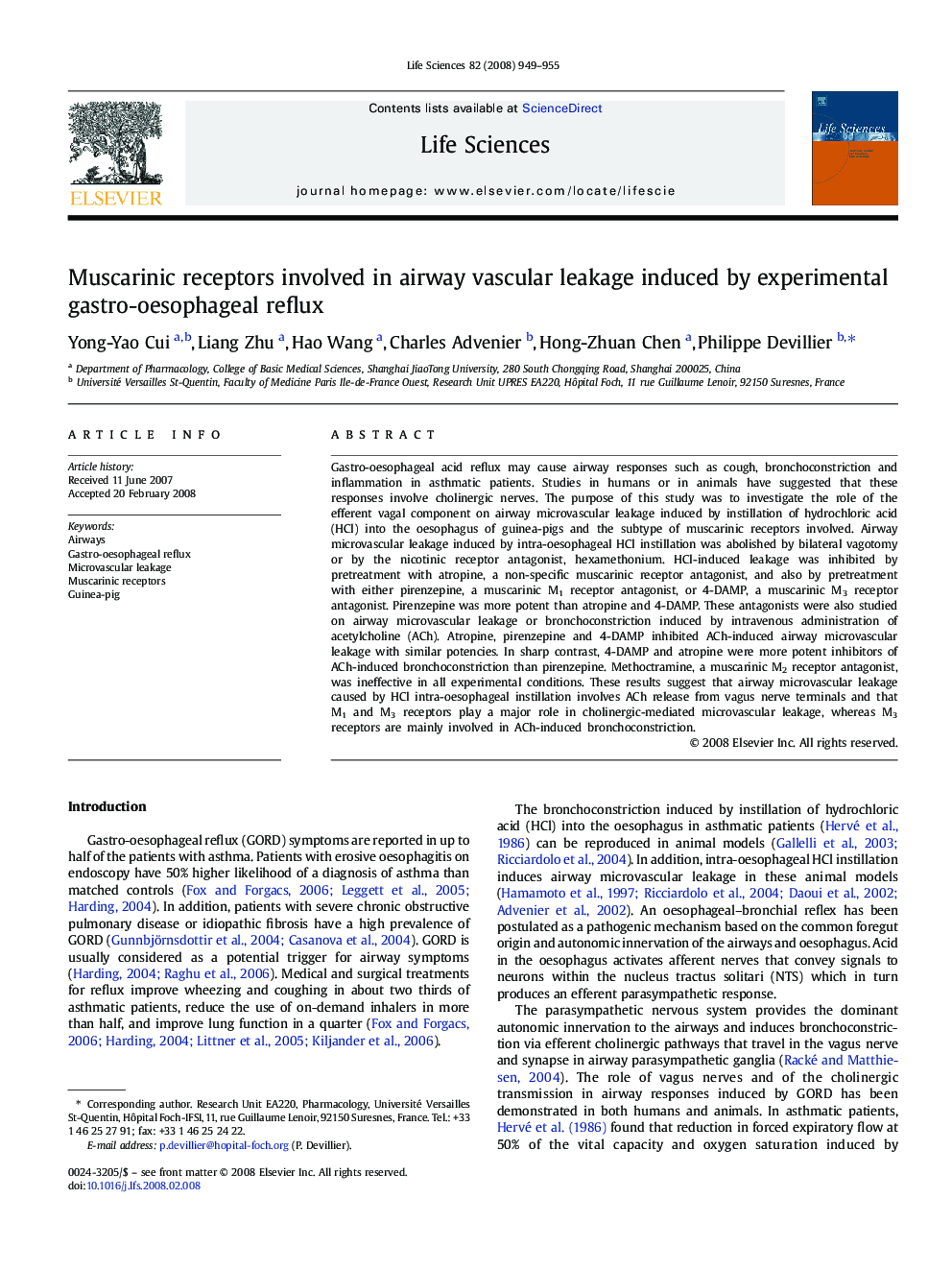| Article ID | Journal | Published Year | Pages | File Type |
|---|---|---|---|---|
| 2553354 | Life Sciences | 2008 | 7 Pages |
Gastro-oesophageal acid reflux may cause airway responses such as cough, bronchoconstriction and inflammation in asthmatic patients. Studies in humans or in animals have suggested that these responses involve cholinergic nerves. The purpose of this study was to investigate the role of the efferent vagal component on airway microvascular leakage induced by instillation of hydrochloric acid (HCl) into the oesophagus of guinea-pigs and the subtype of muscarinic receptors involved. Airway microvascular leakage induced by intra-oesophageal HCl instillation was abolished by bilateral vagotomy or by the nicotinic receptor antagonist, hexamethonium. HCl-induced leakage was inhibited by pretreatment with atropine, a non-specific muscarinic receptor antagonist, and also by pretreatment with either pirenzepine, a muscarinic M1 receptor antagonist, or 4-DAMP, a muscarinic M3 receptor antagonist. Pirenzepine was more potent than atropine and 4-DAMP. These antagonists were also studied on airway microvascular leakage or bronchoconstriction induced by intravenous administration of acetylcholine (ACh). Atropine, pirenzepine and 4-DAMP inhibited ACh-induced airway microvascular leakage with similar potencies. In sharp contrast, 4-DAMP and atropine were more potent inhibitors of ACh-induced bronchoconstriction than pirenzepine. Methoctramine, a muscarinic M2 receptor antagonist, was ineffective in all experimental conditions. These results suggest that airway microvascular leakage caused by HCl intra-oesophageal instillation involves ACh release from vagus nerve terminals and that M1 and M3 receptors play a major role in cholinergic-mediated microvascular leakage, whereas M3 receptors are mainly involved in ACh-induced bronchoconstriction.
